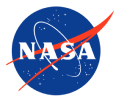NASA Science
NASA Science seeks to discover the secrets of the universe, search for life elsewhere, and protect and improve life on Earth and in space.
cargo resupply mission
message in a bottle
celebrate solar science

Welcome to our redesigned NASA Science website
A gateway to our missions, research, and engagement efforts.
The Science Mission Directorate inspires the learners of today and develops the leaders of tomorrow. One of our key strategies is to purposefully and actively engage with audiences and learners of all ages to share the story of NASA’s integrated science program. From exoplanet research to better understanding Earth’s climate to understanding the influence of the sun on our planet and the solar system, our work is interdisciplinary and collaborative. Similarly, this new website showcases our work in a crosscutting way so that we may build stronger connections with you, our most important stakeholder. Together, we lead a globally interconnected program of scientific discovery that encourages innovation, positively impacts people’s lives, and is a source of inspiration.
Read Nicky Notes
Featured Missions
Upcoming mission milestones showcase the breadth and depth of NASA science.

James Webb Space Telescope
Webb is celebrating one year of incredible discoveries, from exoplanets to the early Universe.

OSIRIS-REx
OSIRIS-REx is the first U.S. mission to collect a sample from an asteroid. It returned to Earth on Sept. 24, 2023, kicking off an exciting autumn of asteroid milestones!

PACE
PACE will advance the assessment of ocean health by measuring the distribution of phytoplankton, tiny plants and algae that sustain the marine food web.
By the Numbers
Science is interconnected; no important question stands alone. The Science Mission Directorate (SMD) is an organization where discoveries in one scientific discipline have a direct route to other areas of study. This flow is something extremely valuable and is rare in the scientific world.
Learn More about NASA Science
NASA Explorers Season 6, Episode 1: Launch
A journey of a billion miles and back begins with a launch.
Watch NowSatellite Data Can Help Limit the Dangers of Windblown Dust
Dust storms present a growing threat to the health and safety of U.S. populations.
Read the Story
Explore our changing planet
Discover Earth as NASA sees it. Learn why this information matters to us all.
Visit the Earth Information Center
Our Solar System
The planetary system we call home orbits a star in an outer spiral arm on the vast Milky Way galaxy.
Learn More



















